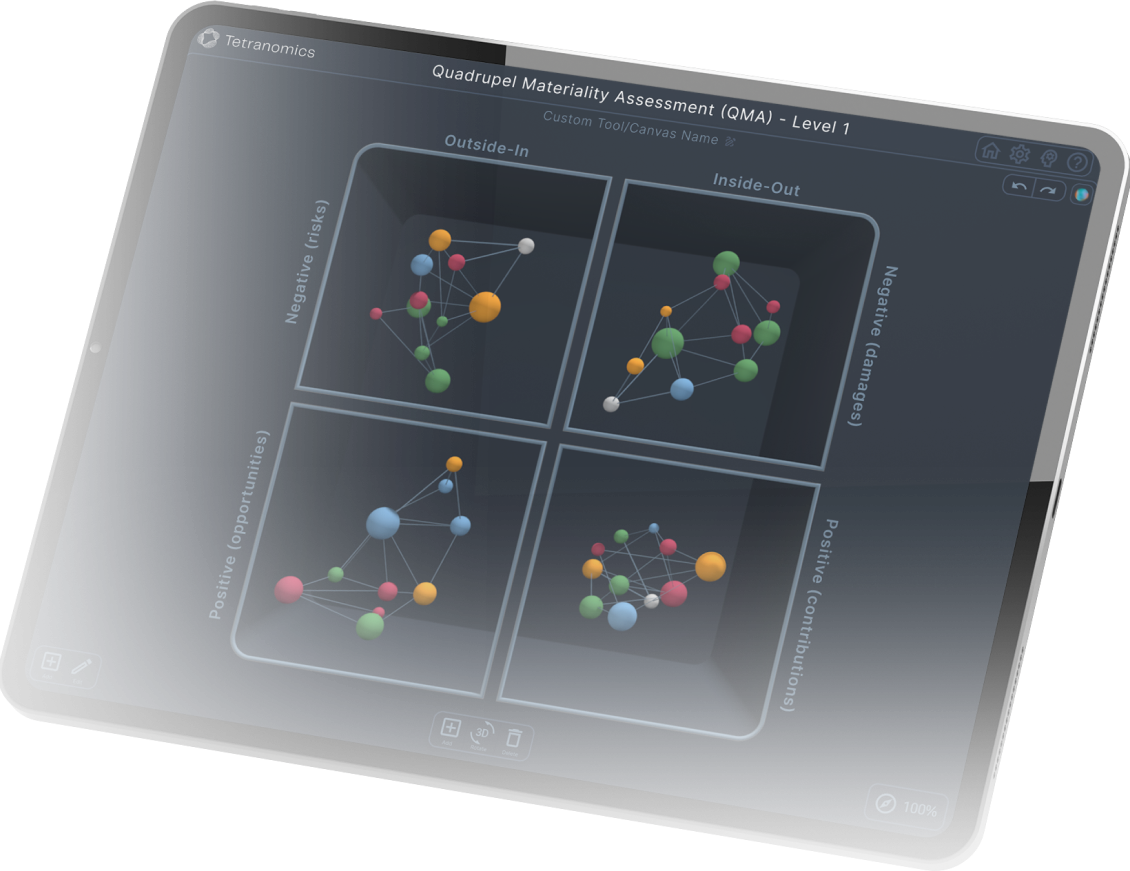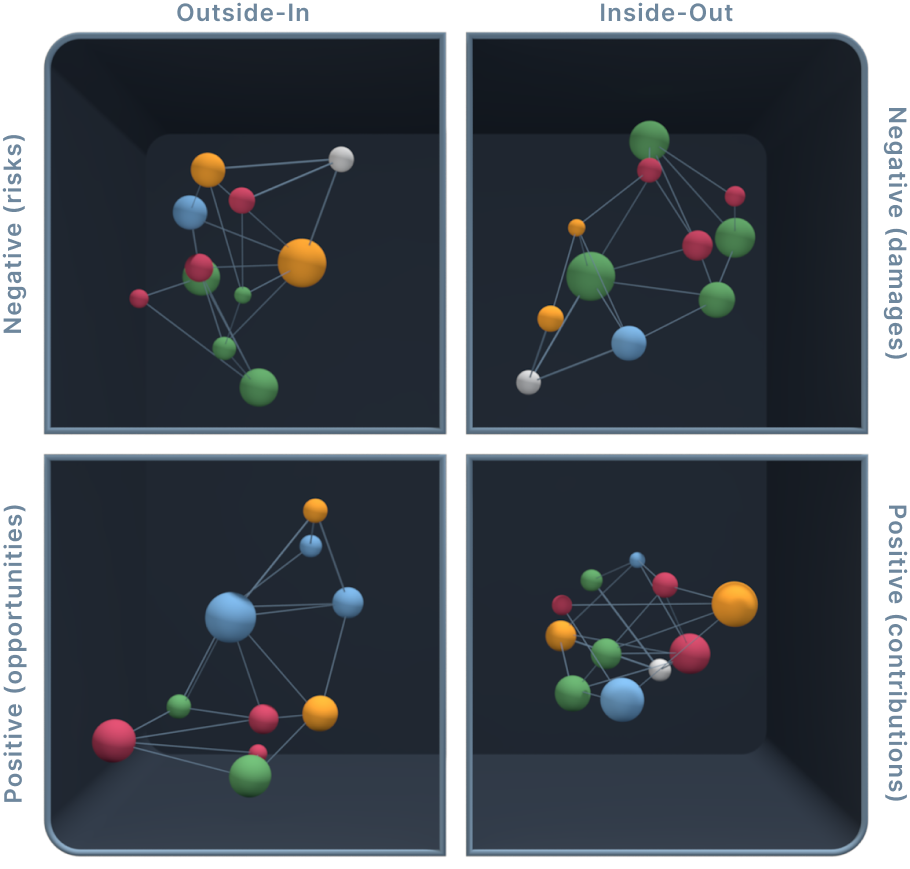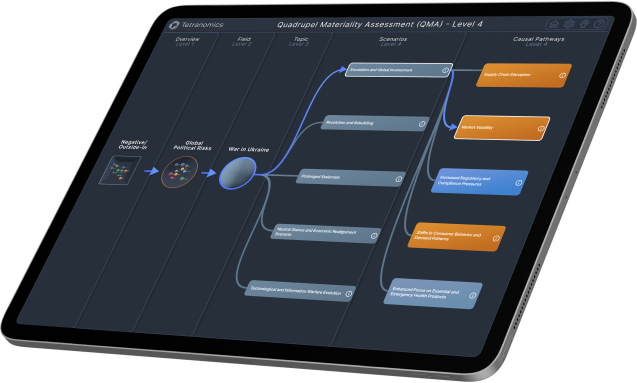
From Compliance
to Strategic Advantage
From Compliance
to Strategic Advantage
Tetranomics has evolved the mandatory Dual Materiality approach into a Quadruple Materiality, transcending mere compliance to unlock vital strategic insights. The AI supported Quadruple Materiality Assessment (QMA) enriches the process with two additional dimensions, laying the foundation for an in-depth strategic process.
QMA
Quadrupel Materiality Assessment
The advancement from dual to a quadruple materiality assessment marks a significant stride for companies navigating the complexities of a rapidly evolving business environment. While dual materiality focuses on the contributions (impact materiality) and risks (financial materiality) of a company, quadruple materiality introduces two additional, complementary dimensions.
The first new dimension, the outside-in-positive, explores how external changes offer opportunities for business innovation and forward-thinking transformation. It empowers companies to proactively use global shifts and market trends as catalysts for developing new business models and staying ahead of change.
The second new dimension, the inside-out-negative, highlights potential strategic pitfalls that could harm both the company and the wider society or environment. This foresight allows companies to pre-emptively address and mitigate these risks, reinforcing responsible and sustainable business practices.
Central to this expanded materiality approach is an AI framework that generates a precise, company-specific initial strategy draft. This draft, designed for further human refinement, provides a robust starting point for strategic development. Additionally, this process organically integrates the creation of the mandatory sustainability report, marrying compliance with strategic innovation. This synergetic blend of AI and human expertise enriches strategic planning but also ensures a comprehensive, proactive approach to sustainability, aligning business growth with broader societal and environmental goals.
Financial Materiality
Damages


